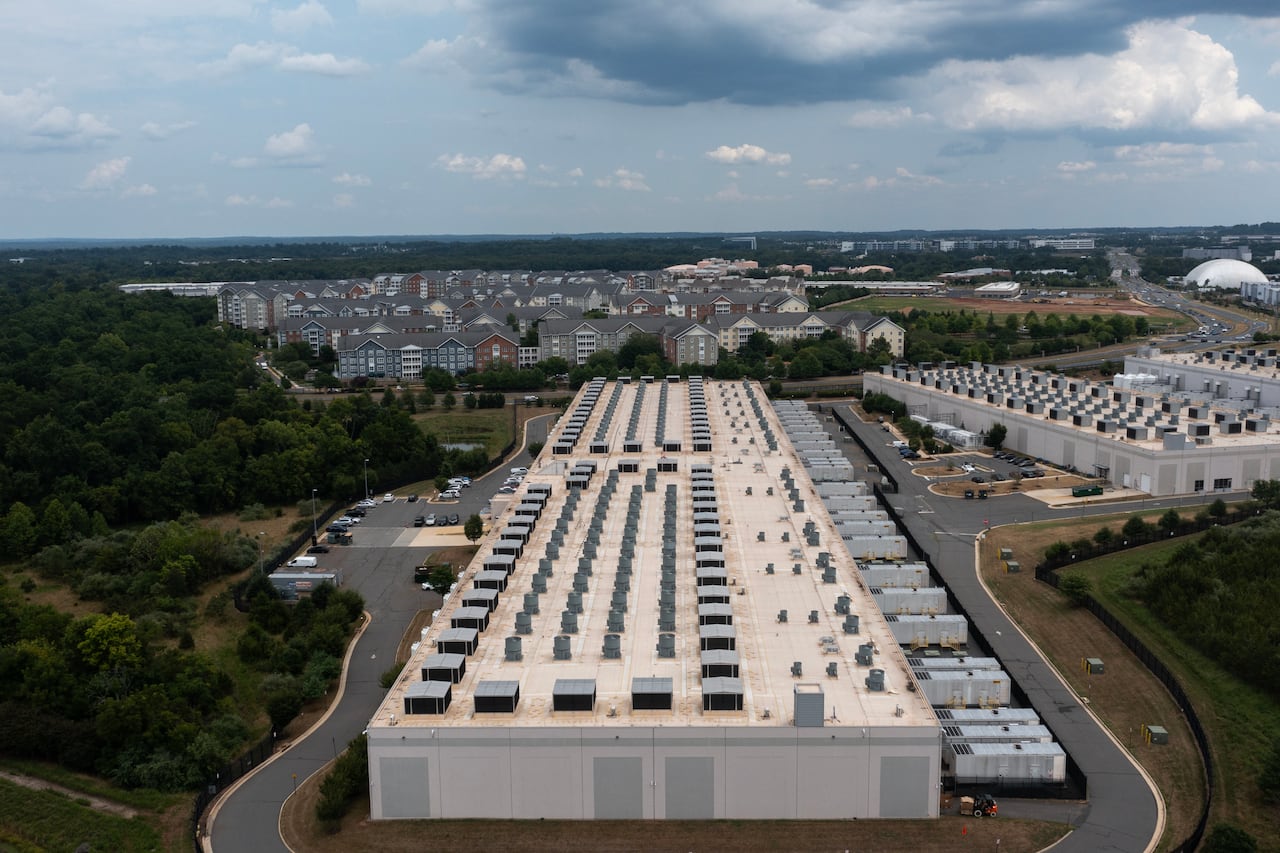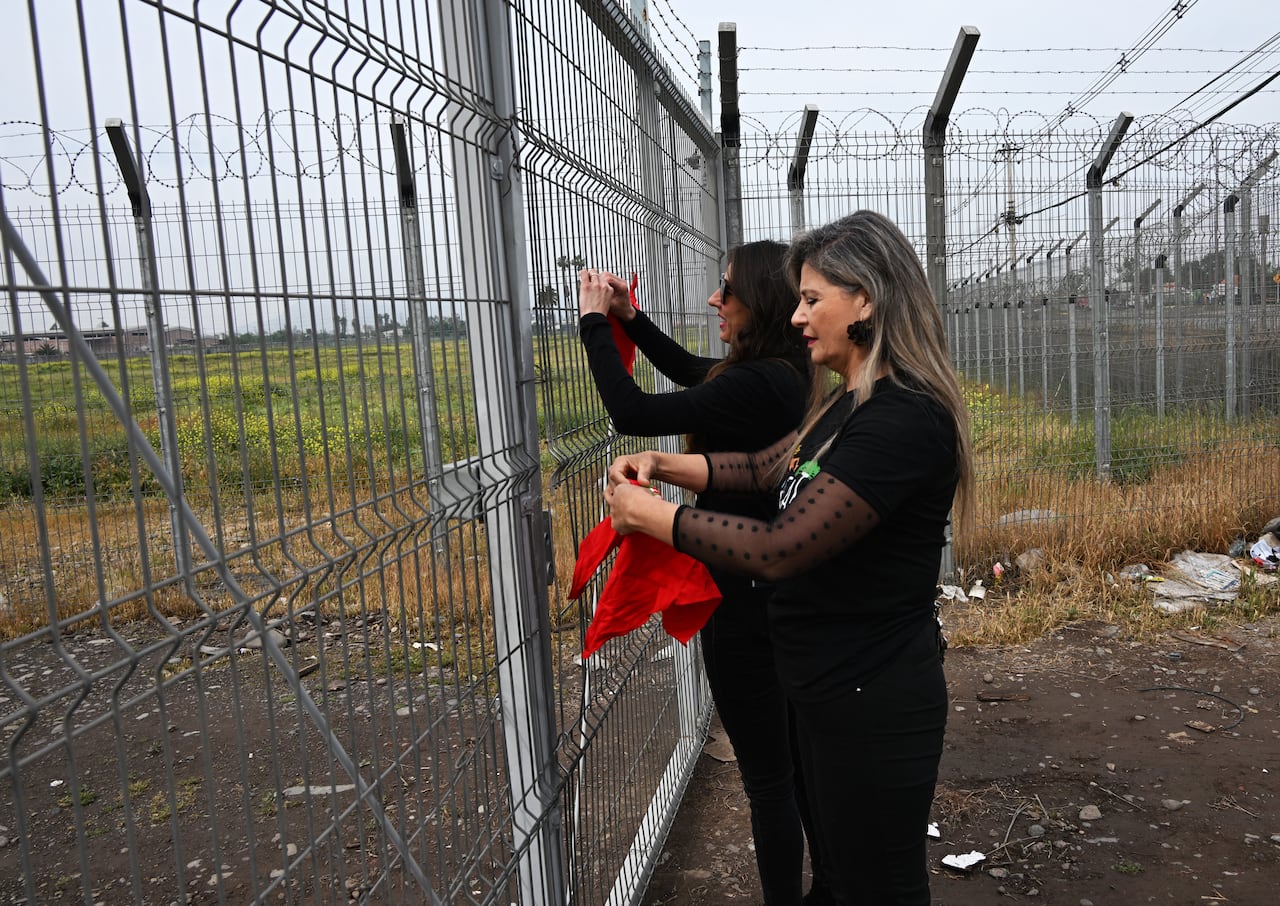AI-related data centres use vast amounts of water. But gauging how much is a murky business

On a dry, hot day this summer, Kathryn Barnwell, a retired English professor, marched up the road from her home in Nanaimo, B.C., to take another crack at the mayor.
Leonard Krog, a longtime friend of Barnwell’s, was standing by the entrance to a parched wooded lot, the proposed site for a data centre Krog has been backing.
“I really, really enjoin you to think about what this [data centre] could mean for your political career,” Barnwell said, barely looking him in the eye.
Krog, who has been mayor since 2018, sees the project as a chance to modernize the city’s economy.
“The kind of jobs that would be attracted to this kind of facility are the jobs of the future,” he said.
Until three years ago, Barnwell knew little about data centres, which house the computer servers that power much of the online world. But when the plot of land near her home was rezoned for one, she began researching. She’s now one of the loudest opponents of the project in Nanaimo.

Her main concern, shared by other local opponents, is the amount of municipal drinking water the 200,000-square foot data centre would need for its cooling system. In a region beset by drought, Barnwell says similar-sized facilities can churn through 70,000 litres of potable water a day.
“Life on this planet is sustained by water. It is not sustained by data. We don't need data the way we need water,” Barnwell said. “And we in Canada have been pretty blithe about our natural resources.”
Barnwell sees herself as part of a global resistance movement drawing attention to the environmental impact of data centres, at a moment when the tech industry is spending dizzying sums to build them.
Canada is poised to join the data centre boom. The federal government, and some provinces, have been actively courting investors, vaunting the country’s cheap electricity (much of it hydro power) and cool climate.
At least eight projects are underway to build hyperscale data centres in Canada, according to the federal government. But as such projects face greater scrutiny around the world, Canada is jumping into the AI construction race with few mechanisms to protect its water supply.
“There's barely any regulation in place,” said Geoff White, executive director of the Public Interest Advocacy Centre, an Ottawa-based consumer protection group.
How much water do chatbots drink?Data centres are as old as computers and until recently were relatively uncontroversial — boring bits of IT infrastructure tucked away in non-descript office spaces.
But with the advent of cloud computing in the mid-2000s, they dramatically increased in size.
These data centres — buildings ranging anywhere from 10,000 to 100,000 square feet — required upwards of 100 megawatts of power and millions of litres of water annually for their cooling systems.
These demands have only been turbocharged by artificial intelligence, which requires data centres that house thousands of densely packed high-performance chips, operating around the clock — and generating heat.
A study done in 2023 estimated that generating between 10 and 50 medium-sized responses in ChatGPT — the AI-powered chatbot — consumed about 500 millilitres of water. That accounts for both the water required to produce the electricity needed to run the data centre (435 millilitres) and cool it down (the remaining 65 millilitres).
A separate study, conducted by the International Energy Agency, estimated that in 2023, data centres around the world consumed around 140 billion litres of water just for cooling.
Much of that was potable water pulled from municipal utilities. (Because data centres generally use evaporative cooling systems, untreated water can damage the sensitive computer equipment inside.)

The tech industry’s water consumption is set to rise in the coming years, as the big firms seek to outpace each other in building the infrastructure necessary for what they hope will be the mass adoption of AI.
Analysts expect capital expenditures globally on cloud and AI will be more than $550 billion Cdn this year alone.
Microsoft builds out in CanadaAmong the big tech companies, Microsoft has taken the lead in building data centres with AI capacity in Canada. The Washington-based corporation purchased seven large tracts of land in 2021, including a golf course near Quebec City and a former department store in the Toronto suburb of Etobicoke.
It’s in the process of turning the sites into data centres capable of powering its AI-enabled products like Azure and Copilot, an investment worth at least $1 billion.
At least two of the Microsoft data centres in Ontario have been cleared by municipal authorities to consume vast amounts of municipal drinking water.
The Etobicoke data centre, dubbed YTO 40, was approved to use up to 39.75 litres of water per second for cooling purposes, according to planning documents submitted to the city. That would be the equivalent of around 1.2 billion litres a year, or 500 Olympic-sized swimming pools.

A Microsoft data centre complex in nearby Vaughan, a city spokesperson said, is expected to consume 730 million litres of water annually.
But according to Microsoft, its new Canadian data centres will only use a fraction of that amount, because of design features that allow them to be cooled using outdoor air and recycled rainwater.
Alistair Speirs, general manager of Microsoft’s Azure global infrastructure, acknowledges traditional industrial cooling has "been a very water-intensive process." He says the way Microsoft is building its data centres today is "with really that in mind.”
“One of the great things about building in Canada, and in colder climates, is that we can just use free air cooling from outside air temperatures.”
The company said its data centres will only draw municipal water when outside temperatures are above 29.4 C or when indoor humidity levels drop below five per cent.
Microsoft has made similar promises elsewhere. The company built a data centre in the northwestern Netherlands despite opposition from local farmers, promising it would only need between 12 and 20 million litres of water annually.
Dutch media later revealed the data centre was consuming more than four times that — as locals were being asked to limit their own water use.
In its response to Dutch media, Microsoft said the initial estimate had been based on “consumption at that time,” but did not specify what time period it was referring to.
Resistance growsThe new Microsoft data centres in Canada, which are slated to come online in the coming months, have faced no discernible opposition from the public. One Etobicoke city councillor wasn’t even aware of the YTO 40 project before CBC News contacted him.
That’s in stark contrast to communities in the United States, Europe and Latin America, where concerns about water scarcity have sparked protests.

Last month, Google shelved plans to build a $1-billion US data centre in Indianapolis, Ind., after residents organized a months-long campaign against the project. When a lawyer representing Google abruptly announced the decision at a city council meeting, the room erupted in applause that lasted for nearly a minute.
A growing number of jurisdictions in the U.S. and Europe are also seeking to pass regulations that would limit data centre water consumption or force companies to be more transparent about how much they're using.
Canada's federal government has set aside $700 million to fund data centre projects here. But aside from energy regulators, who review data centre applications to connect to power grids, there is little industry oversight.
“If we're racing ahead and thinking only about the economic benefits, and not thinking about the downstream impacts to our environment, that's negligent," said White with the Public Interest Advocacy Centre. "I think Canadians ought to be concerned. Our water is highly sought after, and will be as the world gets hotter.”

None of the big tech companies provide detailed breakdowns of their water usage by facility. Some actively resist attempts for more disclosure.
Google paid for an Oregon city’s lawsuit against a local newspaper that was seeking water consumption figures for a data centre. The suit was eventually dropped, and the figures revealed the Google data centre accounted for a quarter of the city’s water use in 2021.
Many Canadian cities, including Toronto, charge commercial water users based on volume consumed, and so are able to monitor usage. But other municipalities don’t have that infrastructure in place.

Amazon Web Services, the cloud-services subsidiary of the online retailing giant, has been operating a data centre in Varennes, Que., just northeast of Montreal, since 2018. The facility is not equipped with a water meter, so no one in Varennes knows how much water is being consumed — though a city spokesperson said a meter will be installed soon.
Similar-sized data centres can use millions of litres of water per year. Amazon didn’t answer CBC's questions about its water use at the Varennes facility.
Without a water meter, the building’s owner only pays a flat rate for potable water use. In 2023, that was $153, according to tax records shared with CBC News. Amazon Web Services recorded $100 billion US in revenue that year.
“What I found, and I think this is an industry-wide problem … [is that] there's a tendency to deny or cover up that water consumption exists,” said Nathan Wangusi, a water scientist who, until last year, worked on sustainability issues for Amazon.
Wangusi, who started his own water consultancy firm after leaving Amazon, said without more transparency, the data centre industry will lose its social licence to operate, potentially stalling the growth of AI.
“We should be disclosing how much water we are using,” he said. “Hoodwinking the public is not good practice. It's not good for business.”
In Nanaimo, where the data centre project is still working its way through the municipal approvals process, opponents like Kathryn Barnwell worry city officials don't have the expertise to hold big tech firms accountable.
“It seems that wherever these data centres have been installed in the first place … those communities that have accepted them have come to regret it really, really deeply,” she said.
Her message to the city’s mayor: “We have the opportunity here to stop it before it starts.”
cbc.ca





